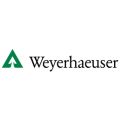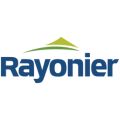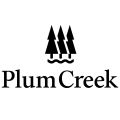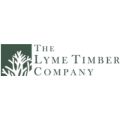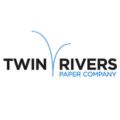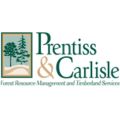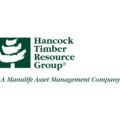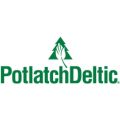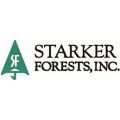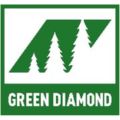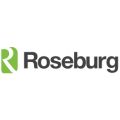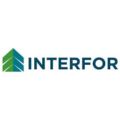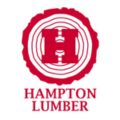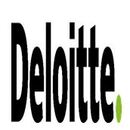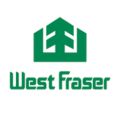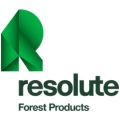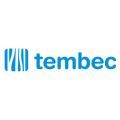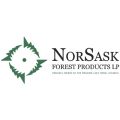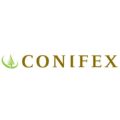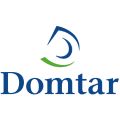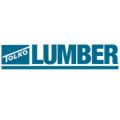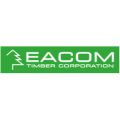Index
Applications & Benefits of GAO’s RFID, BLE, IoT & Drones for timber tract operation industry
GAO’s Assists Clients with Standards, Mandates & Regulations of timber tract operation industry
GAO Software Provides Easy Integration with API
Case Studies of RFID Applications
GAO RFID Systems & Hardware for timber tract operation industry
Overview
The Timber Tract Operations industry involves the management, harvesting, and processing of timber resources from forests for various commercial purposes. This industry encompasses activities such as cultivating and maintaining forests, selectively harvesting mature trees, transporting logs to processing facilities, and converting timber into products like lumber, paper, and wood-based materials. Sustainable practices, compliance with regulations, and market dynamics are key factors in this industry, which plays a crucial role in supplying raw materials for construction, manufacturing, and other sectors while also focusing on environmental conservation and responsible resource management.
GAO’s RFID, BLE, IoT, and drone technologies have helped its customers in timber tract operation industry to improve their work processes, their operations and productivity by better management of their staff, materials and operational equipment such as Harvesting Equipment, Log Transportation Equipment, Processing Equipment, Processing Equipment, Material Handling Equipment, Forest Management Equipment, Safety and Support Equipment, Surveying and Mapping Equipment, Environmental Monitoring Equipment, Communication and Connectivity Tools, Maintenance and Repair Tools, and Fueling and Lubrication Equipment.
Ranked as one of the top 10 global RFID suppliers, GAO RFID Inc. is based in New York City, U.S. and Toronto, Canada. GAO offers a comprehensive selection of UHF, HF (including NFC) and LF RFID (radio frequency identification) readers and tags, BLE (Low Energy Bluetooth) gateways and beacons, and various RFID and BLE systems such as people tracking, asset tracking, access control, parking control, fleet management, WIP (work in progress), traceability. RFID and BLE products and systems, as well as its IoT and drone technologies, have been successfully deployed for timber tract operation industry. Its sister company, GAO Tek Inc. https://gaotek.com, is a leading supplier of industrial or commercial testers and analyzers, drones, and network products.
Applications & Benefits of GAO’s RFID, BLE, IoT & Drones for timber tract operation industry
To satisfy its customers, GAO’s RFID or RFID Systems for timber tract operation industry are offered in 2 versions. One version is that its software is running on a local server that normally is on our client’s premises, and another version runs in the cloud. The cloud server could be GAO’s cloud server, client’s own cloud server or a cloud server from one of the leading cloud server providers such as Amazon Web Services (AWS), Microsoft Azure, Google Cloud, IBM Cloud (formerly SoftLayer), Oracle Cloud, RedHat, Heroku, Digital Ocean, Cloudflare, Linode and Rackspace. The above illustrates GAO system for timber tract operation industry with its software running on a local server.
The above illustrates GAO system for timber tract operation industry with its software running in cloud.
GAO’s RFID and BLE technologies, consisting of RFID readers, RFID tags, BLE gateways, BLE beacons, software, cloud services and their systems, have the following applications in timber tract operation industry:
- Log Tracking and Inventory Management: RFID tags can be attached to individual logs or bundles, allowing for real-time tracking of their movement from the forest to processing facilities. This helps maintain accurate inventory records and streamline supply chain operations.
- Asset Tracking: RFID tags can be affixed to equipment, machinery, and vehicles, enabling efficient tracking of their usage, maintenance schedules, and location within the timber tract.
- Harvest Site Identification: RFID tags can be placed at designated harvest sites, helping operators and workers identify specific areas for tree harvesting or silvicultural activities.
- Vehicle Access Control: RFID-enabled access control systems can restrict entry to authorized personnel and vehicles, enhancing security and preventing unauthorized access to sensitive areas.
- Environmental Monitoring: RFID sensors can be used to monitor environmental conditions such as temperature, humidity, and soil moisture, providing valuable data for sustainable forest management.
- Timber Authentication: RFID tags with unique identifiers can be attached to timber products, ensuring their origin, legality, and compliance with regulations, thereby reducing the risk of illegal logging.
- Safety Compliance: RFID technology can be used to monitor worker presence in hazardous zones, ensuring adherence to safety protocols and reducing the risk of accidents.
- Supply Chain Visibility: RFID-enabled tracking systems offer real-time visibility into the movement of logs and wood products through various stages of processing and distribution.
- Quality Control: RFID tags can store information about the characteristics of individual logs or wood products, enabling better quality control and sorting based on specific attributes.
- Maintenance Management: RFID tags on equipment can trigger maintenance alerts based on usage and predefined schedules, improving equipment reliability and longevity.
- Forest Management and Planning: RFID technology can help gather data about tree growth rates, health, and location, assisting in informed decision-making for forest management and planning.
- Compliance Reporting: RFID systems can automate data collection for regulatory reporting, making it easier to demonstrate compliance with environmental and legal requirements.
- Data Integration and Analytics: RFID-generated data can be integrated into larger forestry management systems, providing insights for optimizing operations, minimizing waste, and enhancing sustainability.
- Real-time Communication: RFID technology enables real-time communication among workers, facilitating coordination and improving response times in remote and rugged environments.
- Ecosystem Monitoring: RFID tags can be used to track wildlife movements and behavior patterns, contributing to ecological research and conservation efforts.
GAO’s drone technologies find the following applications in the timber tract operation industry:
- Forest Inventory and Mapping: Drones equipped with LiDAR (Light Detection and Ranging) or RGB cameras can quickly survey large, forested areas, creating accurate 3D maps and assessing tree density, species distribution, and overall forest health.
- Harvest Planning: Drones can help identify optimal areas for tree harvesting, allowing operators to make informed decisions based on detailed aerial imagery and terrain data.
- Site Preparation and Reforestation: Drones can aid in identifying suitable areas for planting new trees, as well as monitoring the progress of reforestation efforts.
- Timber Volume Estimation: LiDAR-equipped drones can accurately measure tree heights and canopy volume, providing valuable data for estimating timber yield.
- Health and Disease Monitoring: Drones can detect early signs of tree diseases, infestations, or stress through multispectral or thermal imaging, enabling timely intervention and management.
- Wildfire Management: Drones equipped with thermal cameras and real-time imaging can assist in monitoring wildfires, assessing fire spread, and aiding firefighting efforts.
- Environmental Impact Assessment: Drones can be used to assess the environmental impact of timber operations, helping ensure compliance with regulations and minimizing ecological damage.
- Access Route Planning: Drones can scout and map access routes, roads, and trails within the forest, assisting in planning and ensuring safe passage for logging equipment and personnel.
- Illegal Logging Detection: Drones can patrol forests to identify signs of illegal logging activities, helping authorities take appropriate action.
- Erosion and Soil Assessment: Drones can provide insights into soil erosion, sediment runoff, and watershed health, aiding in conservation and land management.
- Timber Transport Route Analysis: Drones can survey and analyze potential routes for transporting harvested timber, optimizing logistics and reducing environmental impact.
- Infrastructure Inspection: Drones can inspect bridges, culverts, and other infrastructure within the timber tract, ensuring safety and facilitating maintenance.
- Safety Monitoring: Drones equipped with sensors can monitor worker activities in hazardous areas, enhancing overall safety compliance.
- Remote Sensing for Resource Management: Drones can monitor changes in forest cover, land use, and land degradation, providing valuable data for sustainable resource management.
- Training and Education: Drones can be used for training forestry personnel in various tasks, such as mapping, site assessment, and emergency response.
GAO’s IoT technologies, consisting of IoT sensors, sensors networks and systems, find the following applications in the timber tract operation industry:
- Forest Monitoring and Management: Soil Moisture Sensors: Monitor soil moisture levels to optimize irrigation and enhance tree growth. Weather Stations: Collect weather data to inform decision-making related to planting, harvesting, and forest management. Tree Health Sensors: Detect signs of disease, stress, or insect infestations in real time to enable prompt intervention.
- Harvesting and Equipment Management: Equipment Tracking: Monitor the location, status, and utilization of logging machinery and vehicles. Predictive Maintenance: Sensors on equipment can predict maintenance needs based on usage and conditions, reducing downtime. Fuel Monitoring: Track fuel consumption and optimize fuel efficiency for vehicles and machinery.
- Inventory and Logistics: RFID and GPS Tracking: Monitor the movement of logs and wood products throughout the supply chain, improving inventory management and traceability. Smart Warehousing: Sensors in warehouses and storage areas optimize inventory placement and alert to temperature and humidity changes.
- Safety and Compliance: Worker Safety Monitoring: IoT-enabled wearables can track worker locations and vital signs, enhancing safety in remote and hazardous environments. Environmental Compliance: Sensors can monitor factors like noise levels, air quality, and water runoff to ensure adherence to environmental regulations.
- Wildfire Detection and Prevention: Fire Detection Sensors: Deploy sensors to detect smoke, heat, and fire outbreaks in real time, enabling rapid response and prevention measures.
- Environmental Conservation: Biodiversity Monitoring: IoT devices can track wildlife movements and behavior patterns to aid in ecological research and conservation efforts. Water Resource Management: Sensors can monitor water sources, helping ensure sustainable water use and protecting aquatic ecosystems.
- Remote Surveillance and Communication: Remote Cameras: Monitor critical areas for security, wildlife observation, and safety compliance. Communication Networks: IoT networks enhance communication in remote locations, aiding coordination and emergency response.
- Data Analytics and Decision-Making: Data Aggregation: Collect data from various sensors and devices to gain insights into forest health, resource utilization, and operational efficiency. Predictive Analytics: Analyze historical and real-time data to make informed predictions about forest growth, yield, and market trends.
- Energy Efficiency: Solar-Powered Sensors: Use renewable energy sources to power sensors and devices in remote locations, reducing reliance on traditional power sources.
- Supply Chain Optimization: Real-time Tracking: Monitor the movement of timber products from harvest sites to processing facilities, optimizing transportation routes and schedules.
- Regulatory Reporting: Automate data collection for regulatory reporting related to environmental impact, forestry practices, and sustainable resource management.
GAO’s Assists Clients with Standards, Mandates & Regulations of Timber Tract Operation Industry
GAO RFID Inc. has developed its products and systems in compliance with industry standards and mandates. GAO has assisted our customers in timber tract operation industry to deploy RFID, BLE, IoT and drone systems and to ensure such deployments complying with applicable industry standards, U.S. government regulations and Canadian government regulations such as:
- ISO 18000-6C
- ISO 14443
- ISO 15693
- Forest Stewardship Council (FSC) Requirement
- Electronic Product Code (EPC) Standards
- ISO 10918
- Forest and Wood Products Australia (FWPA) Guidelines
- NFC (Near Field Communication)
- Savi Locate
- Bluetooth 5.x
- Bluetooth Mesh
- Environmental Sensing Profile (ESP)
- Asset Tracking Profile (ATP)
- Indoor Positioning Services (IPS)
- Generic Attribute Profile (GATT)
- Bluetooth Beacon Technology
- Personnel Tracking and Safety Applications
- Smart Equipment Monitoring
- Data Logging and Transfer
- MQTT (Message Queuing Telemetry Transport)
- CoAP (Constrained Application Protocol)
- LoRaWAN (Long Range Wide Area Network)
- Sigfox
- Thread
- DDS (Data Distribution Service)
- AMQP (Advanced Message Queuing Protocol)
- Web Sockets
- OneM2M
- OMA LwM2M (Lightweight M2M)
- Modbus
- IPv6 over Low-Power Wireless Personal Area Networks (6LoWPAN
- Digital Twins
- Edge Computing
- FAA Part 107 (United States)
- EU Regulation 2019/947 (Europe)
- Transport Canada Part IX (Canada)
- CAA CAP 722 (United Kingdom)
- DGCA CAR Section 3 Series X (India)
- ISO 21384-3
- ASTM F3266-17
- Forest Stewardship Council (FSC) Chain of Custody Certification
- Illegal Logging Regulations
- Timber Tracking Regulations
- Environmental Compliance
- Customs and Trade Regulations
- Country of Origin Labeling
- Worker Safety
- Equipment Tracking and Maintenance
- Environmental Monitoring
- Supply Chain Visibility
- Access Control and Security
- Data Collection and Reporting
- Equipment and Asset Management
- Environmental Monitoring
- Resource Management
- Safety and Occupational Health
- Chain of Custody and Traceability
- Wildlife and Biodiversity Conservation
- Emergency Response
- Data Privacy and Security
- Local Land Use Regulations
- Aviation Authority Regulations
- Remote Pilot Certification
- Airspace Restrictions
- Visual Line of Sight (VLOS)
- Environmental Impact and Wildlife Regulations
- Emergency Services and Law Enforcement
- Privacy and Data Protection
- Operational Permits
- Notices to Airmen (NOTAMs)
Government Regulations
- Clean Water Act (CWA)
- Endangered Species Act (ESA)
- National Environmental Policy Act (NEPA)
- Federal Insecticide, Fungicide, and Rodenticide Act (FIFRA)
- Occupational Safety and Health Act (OSHA)
- National Forest Management Act (NFMA)
- Resource Conservation and Recovery Act (RCRA)
- Safe Drinking Water Act (SDWA)
- Clean Air Act (CAA)
- Comprehensive Environmental Response, Compensation, and Liability Act (CERCLA)
- Federal Land Policy and Management Act (FLPMA)
- Wilderness Act
- Wild and Scenic Rivers Act
- Forest Stewardship Program
- Cooperative Forestry Assistance Act
- State Forest Resource Management Plans
- Timber Harvesting Regulations
- Forest Health and Restoration Activities
Canadian Government Regulations
- Canadian Environmental Protection Act, 1999 (CEPA)
- Fisheries Act
- Species at Risk Act (SARA)
- Canada Wildlife Act
- Canadian Environmental Assessment Act, 2012 (CEAA)
- Canada National Parks Act
- Canadian Environmental Quality Guidelines
- Canadian Forest Service Regulations
- Forest Act (varies by province)
- Forest Management Planning and Practices Regulations
- Forest Sustainability Regulations
- Pest Control Products Act
- Transportation of Dangerous Goods Act
- Occupational Health and Safety Regulations (varies by province)
- Environmental Protection and Enhancement Act (Alberta)
- Crown Lands Act (varies by province)
- Indigenous Consultation and Accommodation Requirements
GAO Software Provides Easy Integration with API
GAO’s RFID and BLE software offers a free trial for both the server-based and cloud versions, and offers an API to the important systems in timber tract operation industry such as:
Personnel Management Applications:
- Worker Safety Monitoring
- Employee Training and Certification Tracking
- Shift Scheduling and Time Tracking
- Remote Workforce Management
- Health and Wellness Monitoring
Equipment Management Applications:
- Equipment Tracking and Inventory
- Preventive Maintenance Scheduling
- Equipment Usage and Utilization Monitoring
- Fuel and Energy Consumption Tracking
- Equipment Maintenance Records Management
Access Control Applications:
- Secure Access to Logging and Processing Sites
- Visitor Management and Authorization
- Restricted Area Monitoring
- Health and Safety Compliance Enforcement
- Remote Access Control for Remote Locations
Warehouse Management Applications:
- Inventory Tracking and Management
- Temperature and Humidity Monitoring
- Product Quality and Grading
- Packaging and Labeling Management
- Order Fulfillment and Shipping
Supply Chain Management Applications:
- Real-time Timber Tracking from Harvest to Processing
- Supplier Management and Compliance Tracking
- Transportation Route Optimization
- Demand Forecasting and Inventory Replenishment
- Sustainable Sourcing and Certification Compliance
Other Applications:
- Environmental Monitoring (Soil, Water Quality)
- Wildlife Tracking and Habitat Management
- Forest Health Assessment and Disease Detection
- GIS (Geographic Information System) Mapping and Analysis
- Timber Yield Estimation and Forest Management Planning
- Environmental Impact Assessment
- Compliance Reporting for Regulatory Agencies
- Real-time Communication and Collaboration
- Remote Surveillance and Security
- Data Analytics for Informed Decision-Making
GAO has enabled its customers to make use of some of the leading software and cloud services in the timber tract operation industry. Below are some of the popular software and cloud services in timber tract operation industry.
ADP Workforce, Kronos Workforce Ready, BambooHR, Paycom, Ceridian Dayforce, eMaint CMMS, Fiix, UpKeep, MPulse, Dude Solutions, Workday, SAP SuccessFactors, Oracle HCM Cloud, ADP Workforce Now, BambooHR, Fiix, UpKeep, MPulse, Dude Solutions, IBM Maximo, Honeywell Access Control, LenelS2, Brivo, Genetec Security Center, Avigilon Control Center, Fishbowl Warehouse, Infor CloudSuite WMS, SAP Extended Warehouse Management (EWM), HighJump Warehouse Edge, Zoho Inventory, SAP Integrated Business Planning, Oracle Supply Chain Management Cloud, JDA Supply Chain Management, Kinaxis RapidResponse, Blue Yonder (formerly JDA Software), Honeywell Pro-Watch, Brivo, Kisi, Openpath, Paxton Net2, Fishbowl Warehouse, Infor CloudSuite WMS, Oracle Warehouse Management Cloud, Zoho Inventory, SAP Extended Warehouse Management (EWM), SAP Integrated Business Planning, Oracle Supply Chain Management Cloud, Blue Yonder (formerly JDA Software), Kinaxis RapidResponse, Logility, Trimble Forestry, Forest Metrix, Forestree, F4 Tech, TimberSmart, Timber Cruise, LIMS (Land Information Management System), Silvacom SilvaTerra, Forest2Market, Remsoft Woodstock, Amazon Web Services (AWS), Microsoft Azure, Google Cloud Platform, IBM Cloud, Salesforce, SAP Cloud Platform, Oracle Cloud, Box, Dropbox Business, Zoho, Smartsheet.
GAO has worked with some of the leading technology companies in timber tract operation industry to provide integrated its RFID, BLE, IoT and drone solutions to customers. Here are some of the technology leaders in timber tract operation industry:
Trimble Inc, Esri, SAP, IBM, Microsoft, Oracle Corporation, Cognizant, Accenture, Deloitte, Wipro, PwC (PricewaterhouseCoopers), Hexagon AB, Trimble Inc, Sensitech, Libelium, Samsara, Optel Group, Advantech, Sierra Wireless, Digi International, Mitsubishi Electric, Honeywell, Inmarsat, Nordic Semiconductor, Esri, Forest Metrix, SAP, IBM, Microsoft, Oracle Corporation, F4 Tech, Silvacom, Remsoft, Borregaard, Hexagon AB.
Case Studies of RFID Applications
Below are some RFID application cases in timber tract operation industry.:
Weyerhaeuser, one of the largest timber companies in the USA, has implemented RFID technology to track and manage timber harvested from their forests. RFID tags are attached to logs, allowing them to be accurately identified, tracked, and traced throughout the supply chain. This enhances inventory management, streamlines operations, and provides visibility into log movements.
Georgia-Pacific, a major forest products company, has utilized RFID technology to track log shipments from the forest to the mill. RFID tags on log trucks and trailers provide real-time visibility into the movement of logs, optimizing transportation logistics and improving overall supply chain efficiency.
FPInnovations, a leading forest research organization in Canada, has explored the use of RFID technology for tracking wood fiber supply chains. RFID tags were applied to wood bundles, enabling real-time tracking of raw materials from forest to mill. This technology helps optimize transportation, streamline operations, and improve supply chain visibility.
The Maritime Lumber Bureau, a non-profit association representing wood product manufacturers in Eastern Canada, has investigated RFID applications in timber tracking. RFID tags were tested on lumber bundles to monitor their movement through the supply chain, enabling accurate inventory management and reducing manual data entry errors.
A timber company in the USA implements a UHF RFID system to track and manage its timber inventory across different tracts of land. RFID tags are attached to individual logs during harvesting, enabling real-time tracking of log movements from the forest to processing facilities. This improves inventory accuracy, optimizes transportation logistics, and enhances traceability throughout the supply chain.
A forestry company deploys UHF RFID technology to monitor and manage its fleet of harvesting equipment. RFID tags are installed on machinery and equipment, allowing for automated tracking of their usage, maintenance schedules, and location. This helps optimize equipment deployment, schedule maintenance tasks, and improve operational efficiency.
A Canadian forestry company implements a UHF RFID system to track the harvesting and transportation of timber from remote forests to processing mills. RFID tags are attached to harvested logs, and RFID readers are placed at key checkpoints along transportation routes. This provides real-time visibility into log movements, enhances supply chain efficiency, and improves compliance with transportation regulations.
A sustainable timber tract operator in Canada adopts UHF RFID technology to monitor and manage forest resources. RFID tags equipped with environmental sensors are deployed across the tract to collect data on soil moisture, temperature, and biodiversity. This information helps ensure compliance with sustainable management practices and supports environmental reporting.
Many applications of RFID by GAO can be found here:
Case Studies of IoT Applications
Below are some IoT application cases in timber tract operation industry.
A timber company in the USA deploys IoT sensors on their logging equipment, such as harvesters and trucks. These sensors collect data on equipment performance, fuel consumption, and maintenance needs in real-time. The data is transmitted to a centralized platform, enabling predictive maintenance, reducing downtime, and optimizing operational efficiency.
A forestry management agency implements an IoT network of sensors across timber tracts. These sensors measure factors such as soil moisture, temperature, humidity, and air quality. The collected data helps monitor forest health, assess environmental conditions, and guide sustainable management practices.
A Canadian timber company deploys IoT-enabled sensors throughout their timber tracts to monitor environmental conditions such as temperature, humidity, soil moisture, and air quality. Data from these sensors is transmitted wirelessly to a central system, providing real-time insights into forest health, supporting sustainable forestry practices, and helping prevent potential issues.
A Canadian forestry company implements IoT sensors on their logging equipment to monitor machinery health, track usage, and predict maintenance needs. The sensors collect data on engine performance, fuel consumption, and operating conditions, allowing for proactive maintenance scheduling and reducing equipment downtime.
A timber company in the USA employs drones equipped with multispectral and LiDAR sensors to conduct aerial surveys of timber tracts. The drones capture high-resolution imagery and data to assess forest health, species distribution, and tree height. This information guides forest management decisions, including selective harvesting and disease prevention.
A forestry operation uses drones to fly over timber tracts and capture detailed imagery of standing trees. Photogrammetry software processes the images to estimate timber volume and biomass. This data supports accurate harvest planning, optimizing resource utilization and minimizing waste.
A Canadian timber company employs drones equipped with LiDAR sensors and high-resolution cameras to conduct aerial surveys of timber tracts. These surveys create accurate 3D maps of the forest, providing detailed information about tree density, species distribution, and terrain. The data collected aids in forest management planning, timber harvesting strategies, and ecosystem analysis.
A forestry management agency in Canada utilizes drones to monitor the health of trees within timber tracts. Drones equipped with multispectral cameras capture imagery that reveals signs of stress, disease, or infestations. This enables early detection and targeted intervention, contributing to healthier forest ecosystems.
GAO RFID Systems & Hardware for Timber Tract Operation Industry
GAO RFID Inc. offers the largest selection of BLE gateways, BLE beacons, RFID readers, tags, antenna, printers, and integrated RFID systems for various industries, including timber tract operation industry.
BLE (Bluetooth Low Energy)
GAO offers advanced BLE gateways:
as well as versatile beacons with such important functions as temperature, humility, vibration and panic button:
GAO’s BLE technology is suitable for many industries, including timber tract operation industry.
UHF (Ultra High Frequency) RFID
GAO offers the largest selection of UHF RFID readers for various industries, including timber tract operation industry:
GAO RFID offers the widest choice of UHF RFID tags, labels, badges, wristbands for various industries, including timber tract operation industry:
and an array of antennas to address different applications:
HF (High Frequency), NFC (Near Field Communications) and LF (Low Frequency) RFID
GAO offers the largest selection of HF, NFC, and LF RFID readers for various industries, including timber tract operation industry:
HF, NFC and LF RFID tags, labels, badges, wristbands for various industries, including timber tract operation industry:
and antennas:
GAO also offers RFID printers:
Digital I/O adapters:
and relay controllers:
For embedded applications, GAO offers UHF, HF and LF RFID reader modules:
- UHF 860 – 960 MHz RFID Modules
- 13.56 MHz High Frequency RFID Modules
- 125 kHz Low Frequency RFID Modules
In collaboration with its sister company GAO Tek Inc, a wide selectioon of high quality drones are offered:
The RFID systems by GAO are highly popular for clients in timber tract operation industry:
Physical asset or operational equipment tracking system:
Assets that can be effectively tracked using GAO’s technologies include Harvesters, Forwarders, Skidders, Feller Bunchers, Chippers, Grinders, Bulldozers, Cable Yarding Systems, Log Loaders, Log Trucks, Portable Sawmills, Chainsaws, Safety Equipment, GIS and GPS Technology, Firefighting Equipment.
list of special equipment used by Timber tract operation industry
People or workers tracking system:
Personnel or people access control system:
Parking or vehicle control system:
Furthermore, GAO provides the customization of RFID tags, RFID readers, BLE beacons and BLE gateways, IoT, drones, and systems and consulting services for Timber tract operation industry and for various industries in all metropolitans in the U.S. and Canada: https://gaorfid.com/services.
GAO Makes Efforts to Satisfy Customers
Large Choice of Products
In order to satisfy the diversified needs of their corporate customers, GAO RFID Inc. and its sister company GAO Tek Inc. together offer a wide choice of RFID, BLE, IoT, drones, testing and measurement devices, and network products.
Overnight Delivery
In order to shorten the delivery to our customers, GAO has maintained a large stock of its products and is able to ship overnight within continental U.S. and Canada, and fast delivery to anywhere in Mexico and Europe from the nearest warehouse.
Local to Our Customers
We are located in both the U.S. and Canada. We travel to customers’ premises if necessary. Hence, we provide a very strong local support to our customers in North America, particularly the U.S., Canada and Mexico, and Europe. Furthermore, we have built partnerships with some integrators, consulting firms and other service providers in different cities to further strengthen our services. Here are some of the service providers in Sub-Industry we have worked with to serve our joint customers:
- Deloitte
- Accenture
- IBM Global Business Services
- PwC (PricewaterhouseCoopers)
- Cognizant
- Capgemini
- DXC Technology
- KPMG
- Ernst & Young (EY)
- CGI
- Wipro
- Infosys
- Atos
- NTT DATA Services
- HCL Technologies
- Tech Mahindra
GAO Has Served Timber Tract Operation Industry Extensively.
GAO RFID Inc. and its sister company GAO Tek Inc. together offer a wide choice of RFID, BLE, IoT, drone, testing and measurement devices, and network products.
GAO’s products and technologies have helped its customers in timber tract operation industry to achieve success in Sustainable forestry, Ecosystem services, Precision forestry, Remote sensing, Biomass utilization, Circular economy, Forest certification, Timberland investment, Forest health management, Carbon sequestration, Tree genetics, Forest inventory technology, Timber harvesting automation, Agroforestry, Urban forestry, Wood Fiber supply chain, Non-timber forest products, Forest restoration, Climate-smart forestry, Biodiversity conservation.
GAO RFID Inc. has deployed RFID, BLE and IoT projects for many companies in timber tract operation industry, including many in its various divisions such as
- Timber Harvesting: Involves the actual cutting and removal of trees from forests or timberlands for various purposes, such as lumber production, paper manufacturing, and more.
- Logging and Forestry Equipment Manufacturing: This sub-industry involves the design, manufacturing, and distribution of machinery and equipment used in logging and forestry operations, such as chainsaws, harvesters, skidders, and forwarders.
- Forest Management and Consulting: Companies in this sub-industry provide services related to sustainable forest management, including land use planning, timberland valuation, wildlife management, and environmental consulting.
- Forest Products Manufacturing: This division encompasses the processing of timber and wood products into various end products, such as lumber, plywood, paper, pulp, wood pellets, and composite materials.
- Timberland Real Estate Investment Trusts (REITs): These entities invest in and manage timberland properties, generating revenue through timber sales and land appreciation.
- Sustainable Forest Certification: Organizations and initiatives that establish standards and certify timber operations for sustainable and responsible forestry practices fall under this category.
- Forest Inventory and GIS Technology: Companies specializing in forest inventory methods, Geographic Information Systems (GIS), and remote sensing technologies that assist in forest management and planning.
- Timber Transportation and Logistics: Involves the transportation of harvested timber from forests to processing facilities or markets, including trucking, rail, and shipping.
- Wood Energy and Biomass: Focuses on the utilization of wood biomass for renewable energy generation, such as wood pellets, biomass power plants, and biofuels.
- Forest Research and Innovation: Organizations and institutions dedicated to advancing research and innovation in forestry, including tree genetics, silviculture, pest management, and sustainable practices.
- Non-Timber Forest Products (NTFPs): Involves the sustainable harvesting and utilization of various forest resources beyond timber, such as mushrooms, berries, medicinal plants, and decorative foliage.
- Timber Trade and Marketing: Companies involved in the buying, selling, and trading of timber and forest products on domestic and international markets.
- Agroforestry and Reforestation: Focuses on integrating tree planting and forestry practices with agricultural activities, as well as large-scale reforestation and afforestation projects.
- Urban Forestry and Arboriculture: This sub-industry deals with the management, maintenance, and preservation of trees in urban and suburban settings, including tree care and arboricultural services.
- Forest Conservation and Land Trusts: Organizations dedicated to preserving and conserving natural forests through land acquisition, protection, and management.
Here are some of the leading companies in timber tract operation industry:
- Weyerhaeuser
- Rayonier
- Plum Creek Timber Company
- The Lyme Timber Company
- Twin Rivers Paper Company
- Prentiss & Carlisle Co., Inc.
- Hancock Timber Resource Group
- PotlatchDeltic Corporation
- Starker Forests, Inc.
- Green Diamond Resource Company
- Sierra Pacific Industries
- Roseburg Forest Products
- Interfor Corporation
- Hampton Lumber
- Swanson Group
- Georgia-Pacific
- International Paper
- Rayonier Inc.
- CatchMark Timber Trust
- Enviva Partners
- Canfor Corporation
- West Fraser Timber Co. Ltd.
- Resolute Forest Products
- Cascades Inc.
- Tembec Inc.
- NorSask Forest Products
- Conifex Timber Inc.
- Domtar Corporation
- Tolko Industries Ltd.
- EACOM Timber Corporation
You Are Invited to Contact Us!
If you interested in our products, services or partnering with us, please feel free to contact us by filling out this form:
or email us at sales@gaorfid.com




